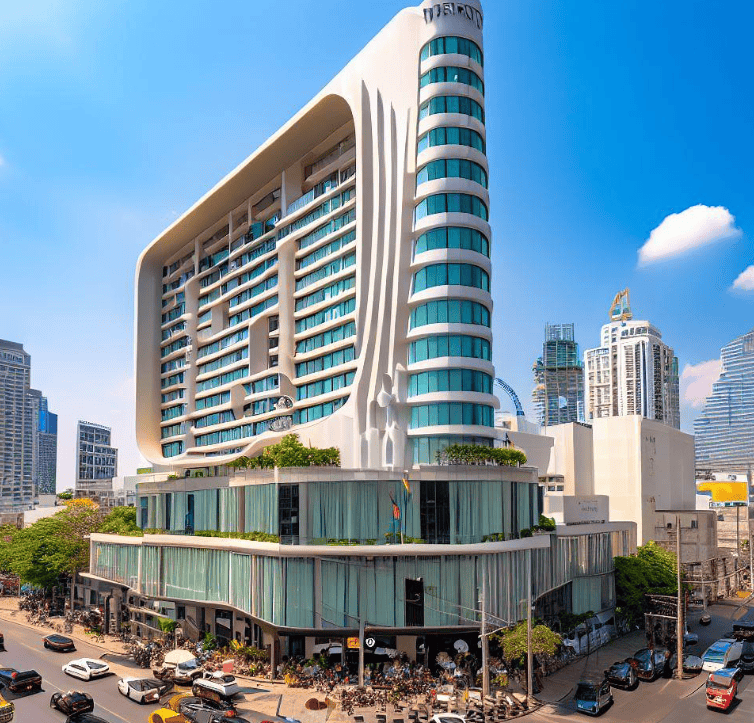
Planning a trip to Scotland? It’s important to know the best time to visit to avoid tourist traps and make the most of your vacation. From beautiful landscapes to vibrant culture, Scotland has a lot to offer. But when should you go? In this article, I’ll guide you through the different seasons in Scotland and help you plan your visit for an authentic and enjoyable experience.
Let’s dive in!
- Best Times to Avoid Tourist Traps in Scotland
- Why Summer Might Not Be the Best Time to Visit Scotland
- Scotland's Peak Tourist Season 😱
- Experiencing Authentic Scotland: When Touristy Becomes Too Much
- Your Interests Should Decide The Best Time to Visit Scotland
- Seasonal Advice: Avoid Scotland's Notorious Midges
- Cost Considerations: When Scotland Is Most Affordable
- Summing Up
- Helpful Links
Key Notes:
- Understanding Scotland’s seasons will help you plan your trip
- Summer may not always be the best time to visit due to crowds and unpredictable weather
- Consider exploring Scotland during off-peak seasons for a more authentic experience
- Scotland offers unique attractions and activities throughout the year
- Timing your visit to coincide with local festivals can provide a genuine Scottish experience
When planning a visit, it’s essential to consider the best time to experience all that it has to offer. The ideal timing can vary depending on your interests, whether they are outdoor activities, festivals, or simply enjoying the scenery.
Best Times to Avoid Tourist Traps in Scotland
When planning a trip to Scotland, it’s helpful to know when to avoid the peak tourist seasons. This way, you can enjoy a more authentic experience without the crowds. Here are some specific times of the year to consider:
1. Summer Months (June to August)
- Why to Avoid: This is the peak tourist season, with many people visiting for festivals, events, and good weather.
- Crowded Areas: Popular destinations like Edinburgh, the Highlands, and the Isle of Skye can be very crowded.
- Tip: If you must visit during summer, try going in early June or late August when crowds are slightly smaller.
2. School Holidays
- Why to Avoid: During school breaks (mid-July to mid-August), families travel, leading to busier attractions and accommodations.
- Crowded Areas: Attractions like Edinburgh Castle and Loch Ness are especially busy.
- Tip: Plan your visit during term time for a quieter experience.
3. Bank Holidays
- Why to Avoid: Public holidays can attract large crowds, especially in city centers and popular tourist spots.
- Specific Dates: Check the calendar for holidays like May Day or the August Bank Holiday.
- Tip: Visit on non-holiday weekdays for a more peaceful experience.
4. Major Festivals
- Why to Avoid: Events like the Edinburgh Festival Fringe (August) and the Royal Edinburgh Military Tattoo can draw huge crowds.
- Crowded Areas: Edinburgh is particularly busy during these events.
- Tip: If interested in festivals, plan to attend during off-peak times to avoid overwhelming crowds.
5. Winter Months (December to February)
- Why to Avoid: While winter can be beautiful, many attractions may have limited hours or be closed.
- Crowded Areas: Popular winter destinations can still attract visitors, especially around Christmas and New Year.
- Tip: If you enjoy winter sports or scenery, consider visiting in late February for fewer crowds.
By being mindful of these times, you can plan a visit that allows you to explore Scotland’s beauty and culture without the hassle of large tourist crowds.
Why Summer Might Not Be the Best Time to Visit Scotland
While summer is a popular time to visit Scotland, it may not always be the best choice due to crowded tourist attractions, higher prices, and unpredictable weather. Exploring Scotland during other seasons can offer a more enjoyable experience with fewer crowds and unique opportunities.
Visiting Scotland during the summer months can mean longer daylight hours and milder temperatures, making it an appealing time to explore the country’s stunning landscapes and historic sites.
However, it’s important to be aware of the drawbacks that come with the peak tourist season.
Crowded tourist attractions: During the summer, popular tourist sites in Scotland, such as Edinburgh Castle and Loch Ness, can become overcrowded with tourists from around the world. Long queues and limited access to attractions can diminish the overall experience.
Higher prices: Accommodation prices tend to be higher during the summer months in Scotland, as demand is at its peak. From hotels to vacation rentals, costs can significantly impact your travel budget. Do also note that dining out and other tourist services may also come with a higher price tag.
Unpredictable weather: Scotland is known for its ever-changing weather, and the summer season is no exception. While you may experience pleasant sunshine, it’s also common to encounter rain showers and cooler temperatures. Hence you might want to pack and dress accordingly for fluctuating weather conditions.
Considering these drawbacks, exploring Scotland during other seasons can provide a more intimate and authentic experience. Whether you choose to visit during the colorful fall foliage, the festive winter celebrations, or the blooming springtime, each season offers its unique charm and fewer crowds to contend with.
Scotland’s Peak Tourist Season 😱
As you plan your trip to Scotland, it’s important to be aware of the peak tourist season, which coincides with various festivals and events throughout the country. While these festivals, especially the Edinburgh festivals, offer unique cultural experiences, they can also bring about some drawbacks.
One of the main challenges of visiting during Scotland’s peak tourist season is dealing with overcrowding. Cities and attractions can become crowded, making it harder to fully enjoy your visit.
The Drawbacks of Visiting During Festivals
Attending festivals in Scotland can be an exciting experience, but it’s essential to be prepared for the potential downsides. Here are some drawbacks of visiting during festivals:
- Increased prices: During the peak tourist season, prices for accommodations, flights, and attractions tend to be higher. It’s important to budget accordingly to avoid overspending.
- Limited availability: Festivals attract a large number of visitors, which can lead to limited availability of accommodations and tickets for popular events. Booking in advance is highly recommended.
- Crowded attractions: The popularity of festivals means that attractions, such as castles, museums, and historical sites, can become crowded. Plan your visits carefully to avoid long queues and ensure a more enjoyable experience.
Despite these drawbacks, attending festivals can still provide a unique and memorable experience, allowing you to immerse yourself in Scotland’s vibrant culture and traditions. However, it’s essential to be prepared and plan accordingly to make the most of your visit.
Tourism Congestion: When Cities and Attractions Are Overcrowded
Scotland’s peak tourist season not only brings an influx of visitors to festivals but also leads to congestion in cities and at popular attractions. The increase in tourist numbers can impact your travel experience in several ways:
- Longer wait times: With larger crowds, expect longer wait times for transportation, entrance to attractions, and even in restaurants. Patience and flexibility are key during this time.
- Trouble finding accommodations: The high demand for accommodations during the peak season can make it difficult to find suitable places to stay. Booking in advance and considering options outside major cities can improve your chances of finding suitable accommodations.
- Harder to explore in-depth: Overcrowding at popular tourist spots can make it challenging to fully explore and appreciate them. Consider visiting lesser-known attractions or exploring off-the-beaten-path destinations to avoid the crowds.
Navigating Scotland’s peak tourist season requires careful planning and consideration. While festivals offer unique cultural experiences, it’s important to be prepared for the drawbacks of crowded attractions and congested cities.
Festival |
Location |
Date |
|---|---|---|
| Edinburgh International Festival | Edinburgh | August |
| Edinburgh Festival Fringe | Edinburgh | August |
| Royal Highland Show | Edinburgh | June |
| Tartan Heart Festival | Beauly | August |
| Oban Winter Festival | Oban | November |
Experiencing Authentic Scotland: When Touristy Becomes Too Much
When traveling to Scotland, it’s natural to want an authentic experience that goes beyond the typical tourist sites. To truly immerse yourself in the local culture and discover the hidden gems of this beautiful country, it’s important to seek out experiences beyond the tourist facade.
By timing your visit to coincide with local festivals, events, and lesser-known attractions, you can have a more genuine Scottish experience.
Seeking Local Culture Beyond the Tourist Facade
To truly understand the rich local culture of Scotland, venture off the beaten path and explore the lesser-known aspects of this vibrant country.
Engage with the locals, visit local markets, and dine at authentic Scottish restaurants to savor traditional cuisine.
Immerse yourself in the local music scene by attending live performances at intimate venues, where you can enjoy traditional folk music or contemporary Scottish bands. By going deep into the local culture, you’ll gain unique insights and create lasting memories. 🤗
Timing Your Visit for a Genuine Scottish Experience
Choosing the right time to visit Scotland can greatly enhance your chances of experiencing the country’s authentic charm. Consider planning your trip around local festivals and events, where you can witness age-old traditions and immerse yourself in Scottish customs. From the vibrant Edinburgh Festival Fringe in August to the colorful Up Helly Aa fire festival in Shetland in January, there are numerous opportunities to witness Scottish culture in all its glory.
Exploring lesser-known attractions during the quieter seasons can also contribute to a more authentic experience. In the off-peak months, you’re more likely to encounter locals and experience a genuine sense of Scottish hospitality without the crowds. Whether it’s exploring remote islands, hiking scenic trails, or visiting small coastal towns, the off-peak seasons offer a chance to discover Scotland’s hidden treasures at your own pace.
Your Interests Should Decide The Best Time to Visit Scotland
When planning your trip to Scotland, it’s important to consider your specific interests and preferences. Whether you’re interested in outdoor adventures, cultural experiences, history, or culinary delights, there is an ideal time to visit Scotland based on your interests.
In this section, we will provide insights into the best times to visit Scotland according to various interests.
If you’re a nature lover and enjoy outdoor activities, such as hiking, mountain biking, or wildlife spotting, the best time to visit Scotland is during the spring and summer months. The countryside is in full bloom, and the weather is generally more pleasant and conducive to outdoor exploration. You can embark on scenic hikes in the Scottish Highlands, explore the stunning lochs, or go birdwatching on the picturesque islands.
For those seeking cultural experiences, attending Scotland’s vibrant festivals is a must. The Edinburgh Festival Fringe, held in August, is the world’s largest arts festival and offers a variety of theater, comedy, music, and dance performances.
The Stirling Highland Games, held in July, is another cultural event that showcases traditional Scottish sports and music. Planning your visit during these festival seasons will allow you to immerse yourself in the rich cultural heritage of Scotland.
If history is your passion, visiting Scotland’s historic castles, such as Edinburgh Castle and Stirling Castle, is a must. The best time to explore these architectural marvels is during the off-peak season, which includes the fall and winter months. During these months, you’ll encounter fewer crowds, allowing you to have a more intimate experience and fully appreciate the historical significance of these landmarks.
Food enthusiasts will find delight in Scotland’s culinary offerings. The ideal time to indulge in traditional Scottish cuisine is during the autumn months when harvest festivals take place. You can savor fresh, locally sourced ingredients and traditional dishes at food festivals like the Highland Feast in September.
Autumn also brings whiskey festivals, providing the perfect opportunity to taste renowned Scottish whiskies and learn about the distilling process.
To summarize, the best time to visit Scotland is determined by your interests. If you’re an outdoor enthusiast, spring and summer offer the best weather for outdoor activities. For cultural experiences, attending festivals during the summer months is ideal.
History lovers will appreciate the quieter off-peak season, and food enthusiasts will enjoy autumn’s harvest festivals. Aligning your visit with your interests will ensure a memorable and personalized experience in beautiful Scotland.
Seasonal Advice: Avoid Scotland’s Notorious Midges
Scotland is renowned for its breathtaking Highlands and outdoor activities. However, one challenge that visitors often face is the presence of midges, tiny flying insects that can be quite bothersome, especially during outdoor adventures.
To ensure a more pleasant journey, you will want to know the best times to explore the Highlands and the months when midges are less prevalent.
Surviving the Midges: Best Times to Explore the Highlands
If you’re planning a trip to the Scottish Highlands, you’ll want to consider visiting during the cooler months when midges are less active. The best times to explore the Highlands and minimize encounters with these pesky insects are generally during spring and autumn. During these seasons, the weather is still favorable, and midges are less abundant.
Spring, typically from April to May, is a great time to visit the Highlands. The weather is generally mild, and the landscape comes alive with blooming flowers and lush greenery. Autumn, from September to October, offers similar advantages with cooler temperatures, vibrant fall foliage, and fewer midges.
By planning your trip to the Highlands during these seasons, you’ll increase your chances of enjoying the stunning scenery and outdoor activities without the annoyance of midges.
Midge-Free Months for a More Pleasant Journey
If you want to minimize the risk of encountering midges during your entire trip to Scotland, it’s worth noting that midges are most active from late spring to early autumn, especially during warm and damp conditions.
If you’re particularly concerned about midges, you may want to consider visiting during the winter months, when these insects are virtually nonexistent.
Winter, from December to February, brings colder temperatures, but it also offers its own unique attractions, such as charming winter celebrations and the opportunity to witness Scotland’s breathtaking landscapes adorned in snow. Traveling during the winter months not only reduces the chances of encountering midges but also offers a quieter and more serene experience in the Highlands.
Remember, while midges can be a nuisance, they shouldn’t deter you from exploring Scotland’s magnificent outdoors. By planning your visit during the appropriate seasons well, you can potentially avoid the notorious midges and fully savor the beauty of the Scottish Highlands.
Cost Considerations: When Scotland Is Most Affordable
When planning a trip to Scotland on a budget, it’s essential to consider various cost factors, such as accommodation prices, transportation expenses, and attraction fees. By carefully managing these costs, you can maximize your travel budget and make the most of your trip to this beautiful country.
One effective way to save money and avoid peak tourist prices is by visiting Scotland during the off-peak season. This typically refers to the times of the year when there are fewer tourists, and therefore, accommodations and other travel-related expenses tend to be more affordable. During the off-peak season, you can often find discounted rates for accommodations, ranging from traditional hotels to cozy bed and breakfasts.
Many establishments offer special promotions and packages during this time, making it an excellent opportunity for budget travelers to secure affordable and comfortable accommodations in Scotland.
Transportation costs can also be more budget-friendly during the off-peak season. Flight tickets, train fares, and car rental prices may be lower outside of the peak tourist months, allowing you to save on transportation expenses and allocate more of your budget towards experiencing the wonders of Scotland. Additionally, attractions and activities often offer reduced admission fees or special discounts during the off-peak season.
Whether you’re exploring historical castles, visiting museums, or embarking on outdoor adventures, taking advantage of these cost-saving opportunities can help you stretch your budget further.
Overall, visiting Scotland during the off-peak season can provide a more affordable travel experience without compromising on the beauty and charm of this magnificent country. Once you have a well-planned trip and take advantage of the cost considerations available, you can create unforgettable memories while staying within your budget.
Summing Up
When planning your trip to Scotland, it’s essential to consider various factors to determine the best time to visit. Personal preferences, interests, and tolerance for crowds and weather conditions all play a significant role in optimizing your trip and ensuring a memorable experience in the enchanting land of Scotland.
Whether you prefer to immerse yourself in the vibrant atmosphere of the peak tourist season or explore off-peak times for a more authentic and affordable journey, Scotland offers something for everyone year-round. By carefully considering your travel goals and planning accordingly, you can make the most of your time in this captivating country.
Remember to keep these Scotland travel tips in mind: research the different seasons, understand regional weather patterns, and be aware of potential tourist disappointments and cost considerations.
With this knowledge, you can navigate Scotland’s diverse climates and plan your visit during the best time for your interests and preferences.
Helpful Links
- https://www.twowanderingsoles.com/blog/best-time-to-visit-scotland
- https://www.nordicvisitor.com/blog/best-time-visit-scotland-guide/
- https://www.kiltedpipertours.com/blog/best-time-to-visit-scotland/

Jennifer is a thrifty chef turned tech enthusiast and writer. With a love for electronic gadgets and programming, Jennifer is always tinkering with the latest tech, from smartphones to drones, while keeping a close watch on her expenses.
When she’s not geeking out over gadgets, Jennifer is busy exploring the world on a budget. She’s a seasoned traveler who can live anywhere in the world without burning a hole in her pocket, and she loves to immerse herself in new cultures and cuisines without overspending.
Jennifer’s passion for web design and programming has also led her to create her own website, where she shares her travel stories and culinary creations with readers around the world, often with a focus on affordable and cost-effective options. With her unique blend of culinary expertise and tech-savvy, Jennifer is constantly ‘sniffing’ out great travel and culinary deals across the web.



